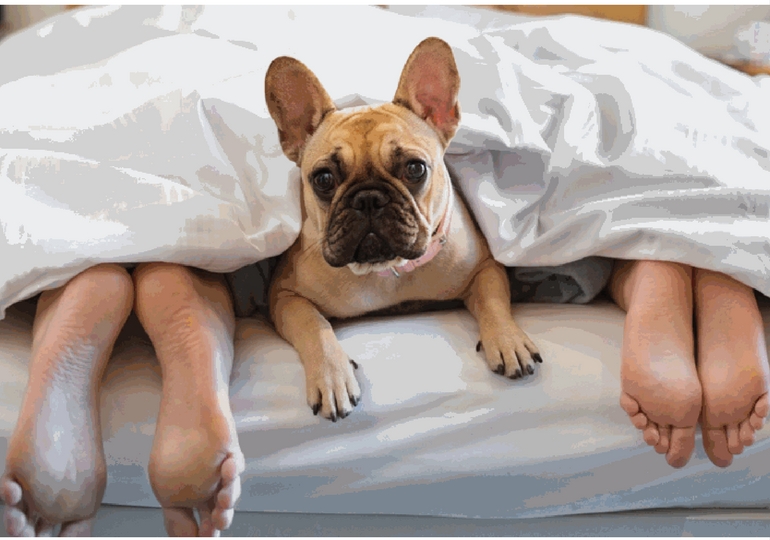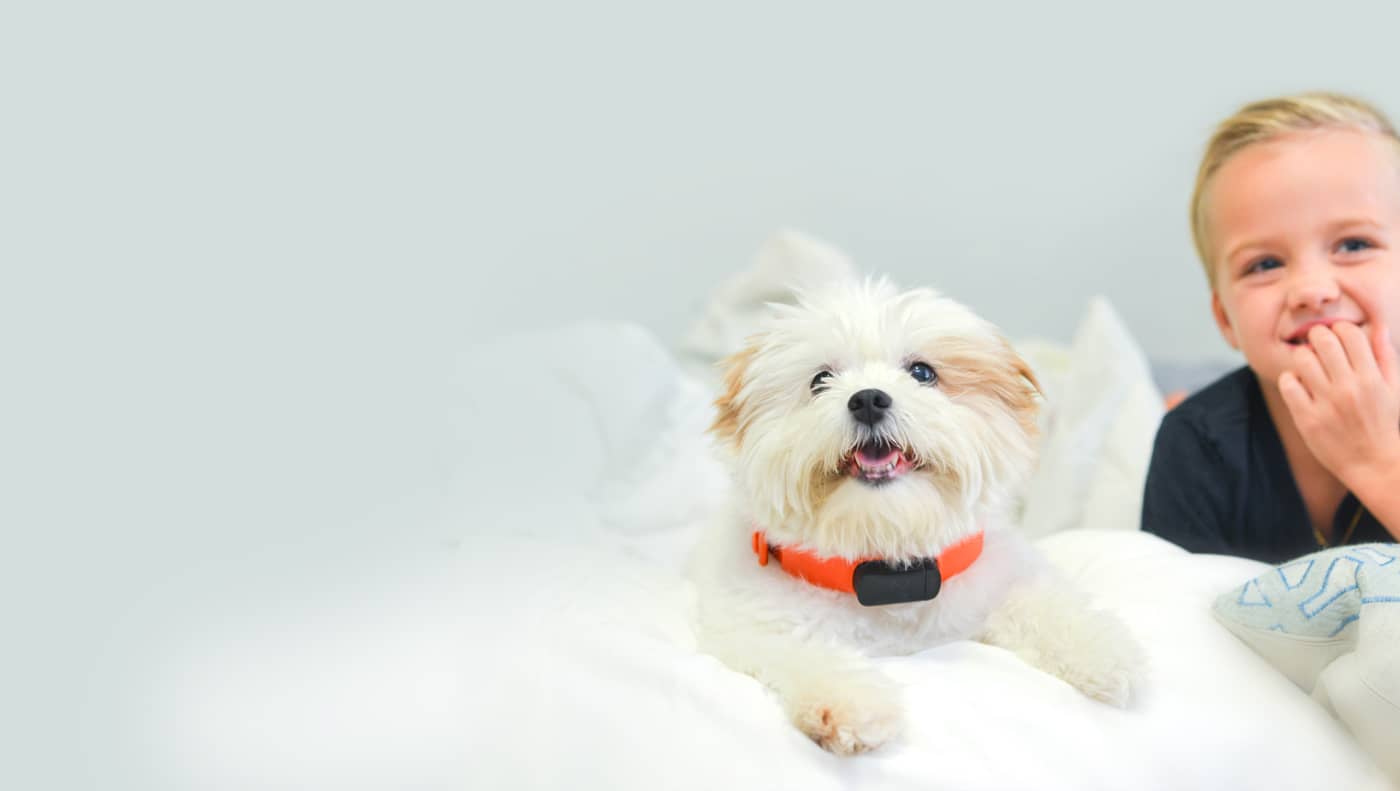Picture this: you’re all settled into bed and you hear the familiar pitter patter of paws in the hall. Then comes the jump up on the bed and soon enough your dog is snuggled right under the covers the with you. If this feels like a familiar scene, you aren’t alone. Countless dog owners let their furry friends sleep with them. But the question is, should you really be letting your dog sleep in bed with you?
We’ve got the answers.
Pros
Bonding
Over 71% of pet owners let their pets occasionally share their bed. And now researchers say that if you’re already in that percentile, there is no need to stop – especially if everyone sleeps soundly. There are numerous psychological benefits to the feelings of safety and warmth that a pup provides while in bed.
Happiness
Certain research has shown that both you and your pup might benefit from cuddling in bed together. Touching or petting benefits increases oxytocin levels in humans’ brains. Oxytocin, also known as the ‘cuddle chemical’, helps increase our feelings of safety and trust.
Pack-Mentality
If you have more than one pup, sharing the bed can be an awesome way to increase the pack-mentality of the group. Wild dogs sleep together in the wild as a pack and the same rings true for domestic pups.
Cons
Health Issues
If you suffer from any allergies or asthma, it’s probably not a good idea to let your dog sleep with you. Furthermore, some research says that dogs can bring potentially harmful bacteria and viruses to bed – including fleas and ticks.
Sleep Interruption
One of the biggest cons to having your pup sleep with you is that they can cause serious sleep disturbance – especially if you or your dog moves around a lot.
Dominance Problems
This can be a con if your dog already has an issue with the family hierarchy. Sharing a bed with a hierarchical-challenged dog may make matters worse. But if your dog doesn’t exhibit any these tendencies, you should be in the clear.
Love Killer
If you share your home (and bed) with another human, adding a pup in there can kill the romance. This may especially true for energetic puppies or bigger dogs that love to sleep right in the middle of you.
Trouble Boarding
An often glossed over con for co-sleeping with your dog is that it makes it hard to travel with or without them. If they aren’t comfortable in a crate, it may be more difficult to find a dog sitter willing to share their own bed. It may also be harder to find a hotel that either allows dogs or with a big enough bed.
The Verdict
The verdict here is that it is generally fine to share your bed with your pup – as long as you’re sleeping well. If you suffer from insomnia or generally have trouble sleeping, a dog in the bed is only going to make matters worse. And, if you have any allergies or asthma, consider nixing the bed-sharing.
But, there are numerous benefits to sleeping with your pup. You get increased levels of oxytocin and your dog gets a sense of love and security. Plus, it makes cuddling with your pup a whole lot easier.

Most of my day is spent playing with dogs. When they nap, I’m here working on my blog. You’re welcome to reach out and connect with me.









